The Blind Spot Gear Tile Light is a small, compact fixture that has been designed as a multi purpose lighting solution. Interestingly enough funding for development of the light was done through an Indiegogo campaign which began way back in 2015. The light is only now starting to ship, so has the Tile Light been worth the wait?
Small, compact size
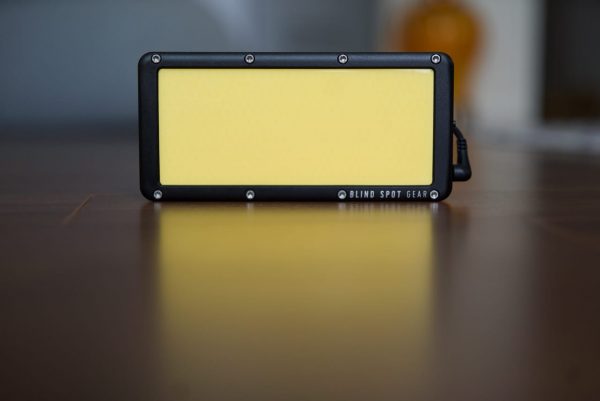
The Tile Light is rectangular with dimensions of 172mm x 76mm x 20mm. The rectangular shape helps the light produce a very wide throw. The actual width of the beam is 120 degrees. Blind Spot Gear claim that the Tile Light uses something called trans-technological fusion, which actually means it has LED diodes that are encased in the light surface itself.
Full Metal Jacket
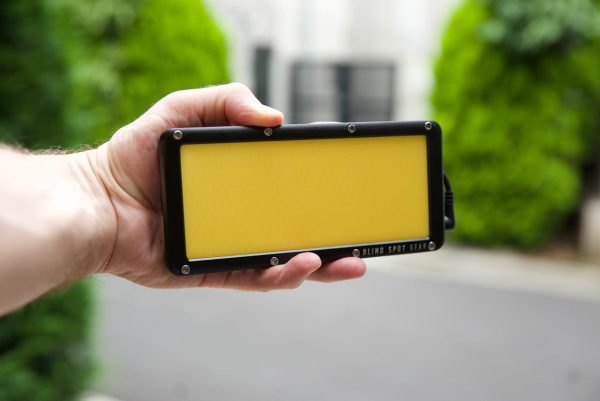
The Tile Light is constructed out of adc12 aluminium and all you have to do is pick it up to feel how solidly it is made. The fixture weighs in at 420g (14.81oz) with the included battery and battery plate attached.
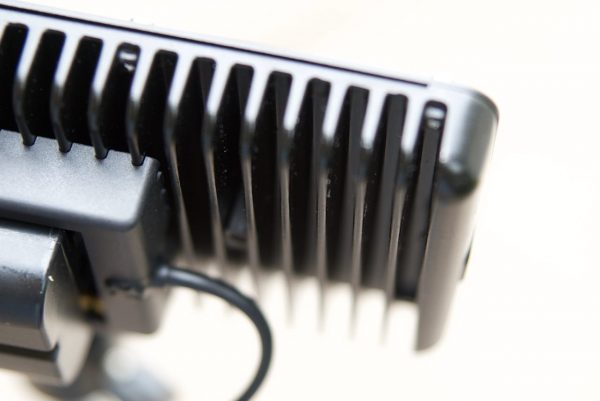
The back of the light has a large heatsink that is used to keep the fixture cool. I found that the heatsink does a good job at keeping the back of the light cool, but there is still some heat being generated at the front.
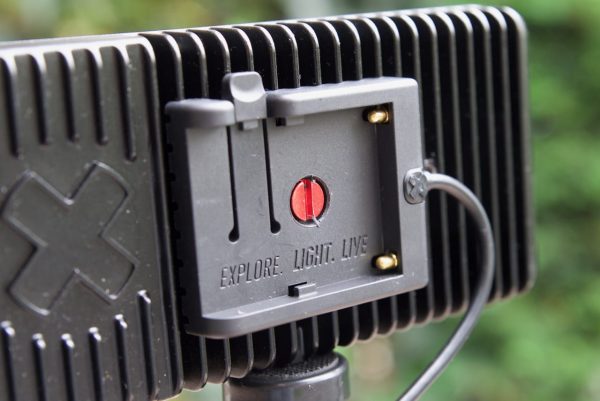
The battery plate screws down securely onto the back of the light and there are two 1/4″ 20 mounting holes – one on the bottom and one on the side.
Controls
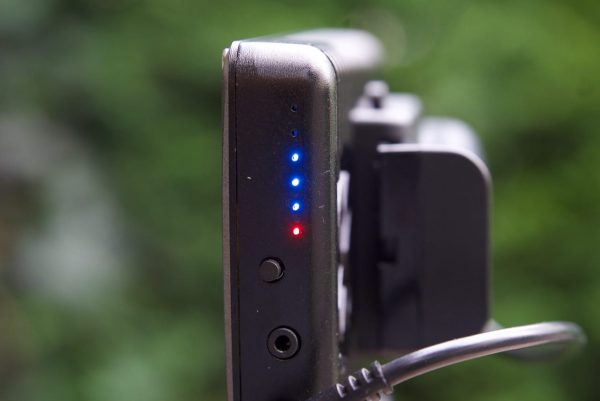
The light only has one button on it. You press it once to turn it on, and then every subsequent push results in the lights output being increased. There are 5 steps, so it’s safe to assume that every press of the button results in a 20% increase.
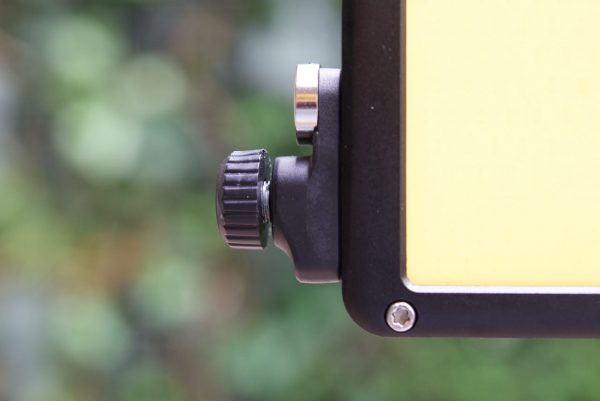
The Tile Light does come with this strange dimmer unit that you can attach to the side of the fixture to give you finer control of the light. To me this dimmer unit makes no sense at all, and I would rather just have one control or dial built in to the light that allowed you to dim it up and down. If this dimmer unit had been wireless or come with a really long cable then I could see why it would make sense, but it doesn’t. The cable from the dimmer unit to the light is about 20cm long. In Blind Spot Gear’s defence, the dimmer does work well, but it somewhat feels like an afterthought. Blind Spot Gear have told me that a 65cm dimmer extension cable will be included with the Tile Light once it starts shipping.
Power
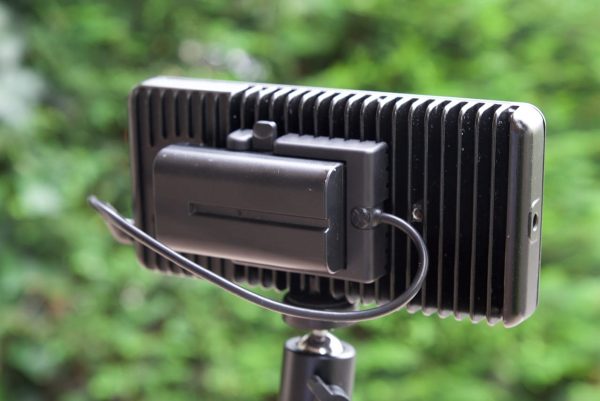
The Tile Light can be run off mains power or via a Sony NP-F style battery. The light draws just 25W at 4.5A. The nice thing about this low power draw is you can use small and inexpensive Sony NP-F style batteries to power your light for extended periods of time.
Included accessories
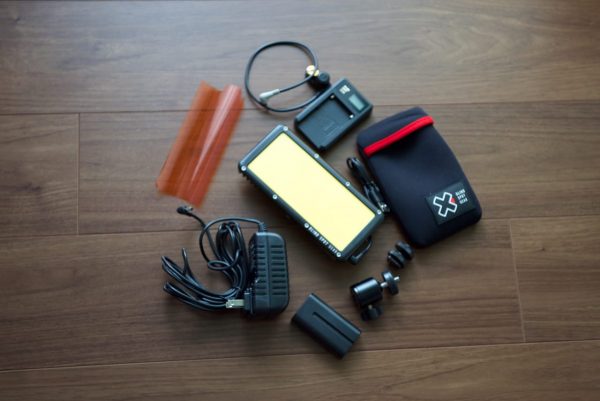
Blind Spot Gear certainly give you everything you need to get up and running with the light. The Tile Light comes with a protective pouch, remote dimmer unit, travel AC, battery adapter, battery(NP-F550), battery charger, ball mount, hotshoe adapter, and a CTO gel. The accessories are all well made and it means you don’t have to go hunting around for parts to adapt the light to your shooting style.

The CTO gel is quick to use as it literally just sticks onto the front of the fixture, and you can peel it on or off as many times as you like. I did however, find that the gel isn’t quite large enough and doesn’t cover the whole front of the light. This may be a minor complaint, but it should really fit perfectly and not be just fairly close.
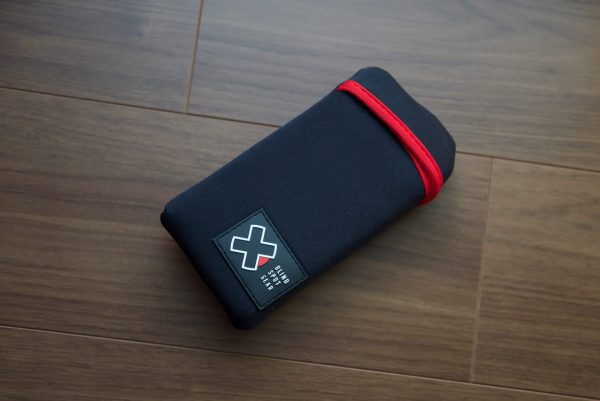
The protective pouch is nice, but the light doesn’t fit in when you have the battery plate, a battery and the dimmer unit attached. I am not sure why manufacturers continue to make cases and bags that don’t work when you have the product configured for use.
Photometric results
I tested out the Blind Spot Gear Tile Light with a Sekonic C700 to gauge how much output the light has, as well as how colour accurate it is.
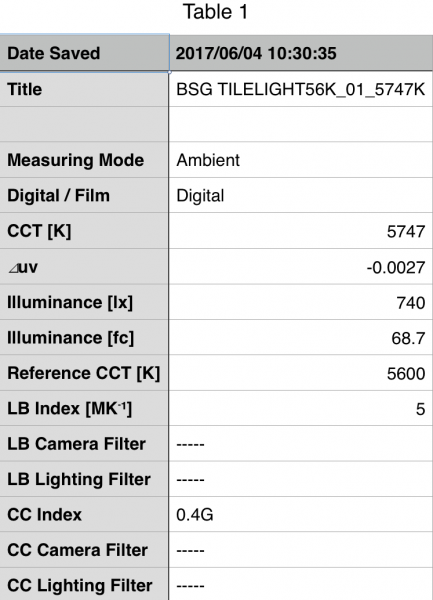
Above you can see that the light when measured at 5600K at a distance of 1m recorded an output of 740lx. 740lx may not sound like a lot, but it’s certainly impressive from a light this size. As a comparison the slightly smaller Cineo Matchbox puts out 346lx. Blind Spot Gear quote an output of 517 lx at a distance of 1 meter, and my testing found that in fact it was even more powerful than the claimed figures. The Tile Light also measured a kelvin temperature of 5747K and had a ⊿uv (the value to show how much this light is away from being an ideal light source (black body radiation = incandescent lamp) score of-0.0027.
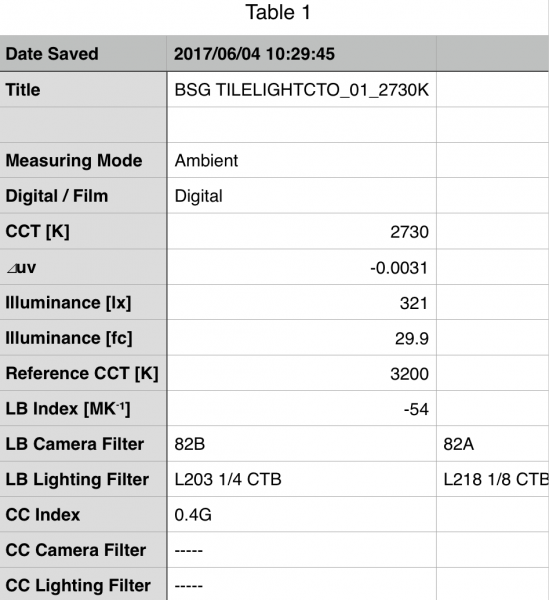
Above you can see the output and kelvin temperature results from when I measure the light with its included CTO gel filter. The Tile Light had an output of 321lx and recorded a kelvin temperature of 2730K. Using the Tile Light with the CTO gel results in the output of the light not only being reduced by almost 50%, but it also produces a very low kelvin temperature.
Colour rendering
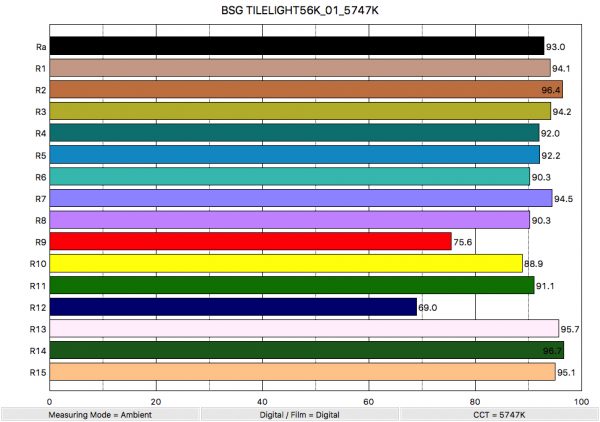
Above you can see the light’s colour rendering scores. It recorded an average CRI (R1-R8) of 93.1 and an extended CRI (R1-R15) of 90.4. For replicating skin tones accurately it recorded 75.6 for R9 (red), 95.7 for R13 (closest to caucasian skin tones), and 95.1 for R15 (closest to asian skin tones). Blind Spot Gear quotes a figure of 92 TLCI for their Tile Light and my testing confirmed that this is fairly accurate.
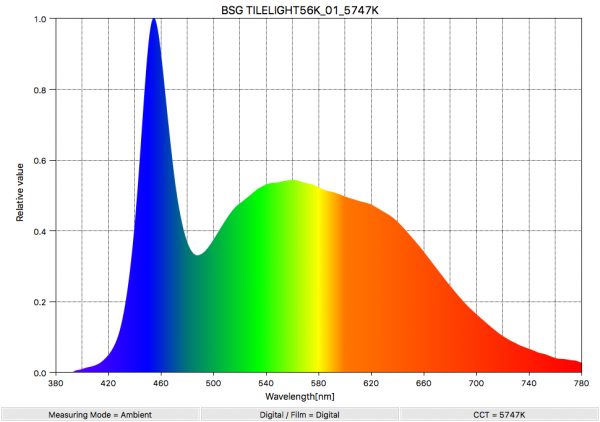
Above you can see the spectral distribution chart for the Tile Light. As you can see the spectral distribution is fairly good for a LED light, with the only dip being around the 480-520nm mark. The dip in this part of the spectrum is not that uncommon for 5600K LED lights.
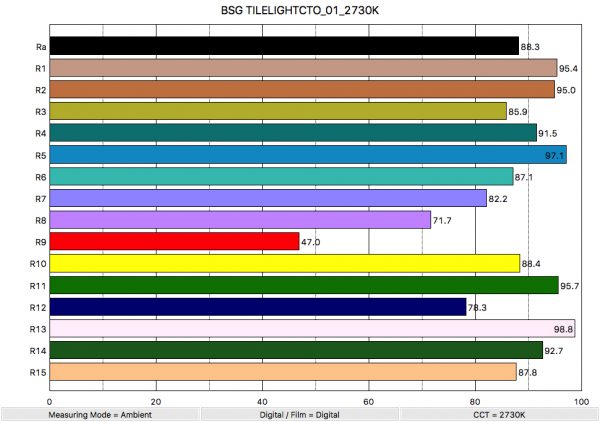
Above you can see the colour rendering scores of the Tile Light when using the included CTO gel filter. The light recorded an average CRI (R1-R8) of 88.3 and an extended CRI (R1-R15) of 86.3. For replicating skin tones accurately it recorded 47.0 for R9 (red), 98.8 for R13 (closest to caucasian skin tones), and 87.8 for R15 (closest to asian skin tones). The results you get when using the CTO filter are OK, but far from great.
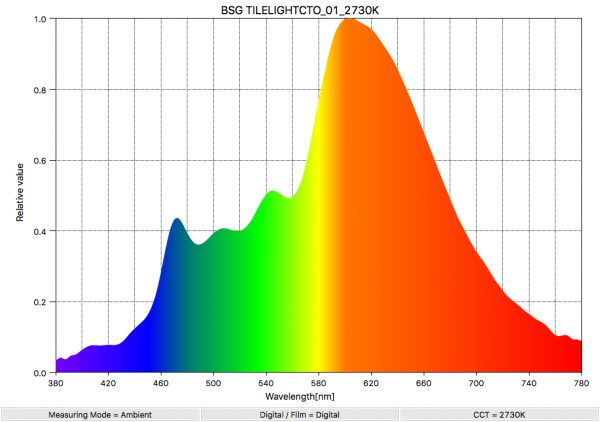
As you can see above in the spectral distribution chart, the Tile Light with the CTO filter looks like a roller coaster. There are major holes throughout the spectral range. To be fair this light is not being marketed as a bi-colour light and is in principle a 5600K fixture. That said I have tested several other lights that come with CTO gels that perform a lot better.
Quality of light
As I mention in every lighting review, the photometric scores only tell part of the story. There are plenty of lights that have good photometric scores that don’t particularly produce a nice quality of light. Above you can see some quick examples of filming a subject in an uncontrolled environment by just using the Tile Light. The whole idea of these examples to show you what the light can do in a scenario like this where you have limited time to set up lights. All the examples I show can be replicated in under two minutes.
The light’s wide beam angle makes it more suited to lighting up spaces where you just need a bit of fill. I should clarify that this is not a big light so you shouldn’t expect it to be able to light up a big room. The Tile Light works really well if you are trying to film someone in a room and you want a soft even looking light that doesn’t look like it’s coming from a small single source.
This is the light’s biggest strength, and I think a lot of shooters will really like the results you can get when using the light in this type of scenario.
For me the Tile Light doesn’t really work well as a key light for interviews. The beam spread is just too wide and you get light spill everywhere. Without any type of louvre or honeycomb grid you just can’t get the control you need in most instances. If you are doing product reviews , are a VJ, or you are doing run and gun news or documentary work where you need a nice on camera top light the Tile Light makes a lot of sense.
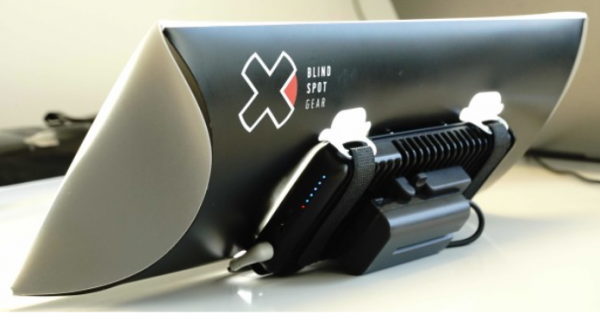
Bright Spot Gear do have an optional soft box coming for the light, but with any small fixture it’s going to knock the output down to a point where if you wanted to use it for lighting an interview you are going to have to place the light very very close to your subject.
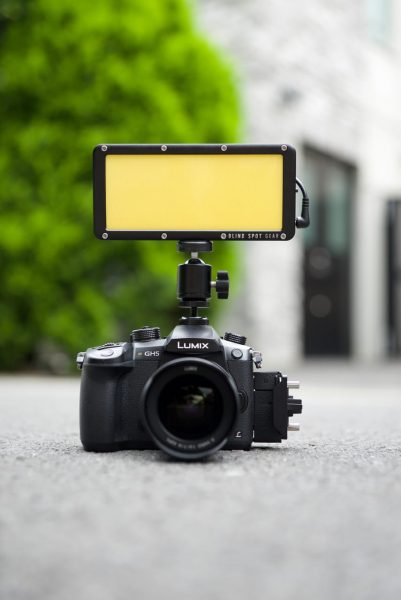
There is no doubt that the Tile Light is a versatile fixture that is capable of being used in a lot of different environments. It’s only marginally bigger than a lot of on-camera lights, but it has the added benefit of delivering a lot more output.
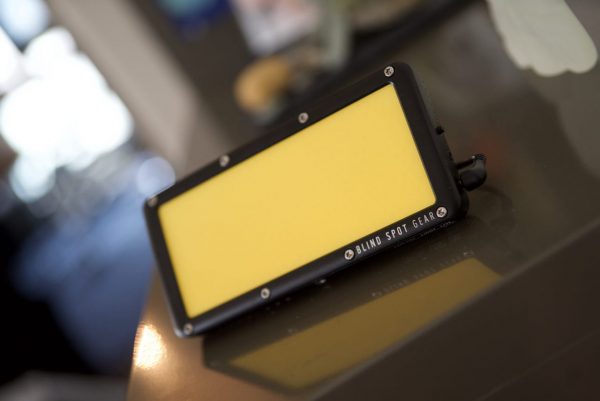
Blind Spot Gear Tile Light: Verdict, price and availability
The Tile Light will retail for $495US. It’s a little hard to compare the Tile Light to other available fixtures on the market as it sort of falls between two categories. It’s larger than quite a lot of on camera lights, but smaller than something like a Arri LoCaster 2 or Aputure LS 1/2w.
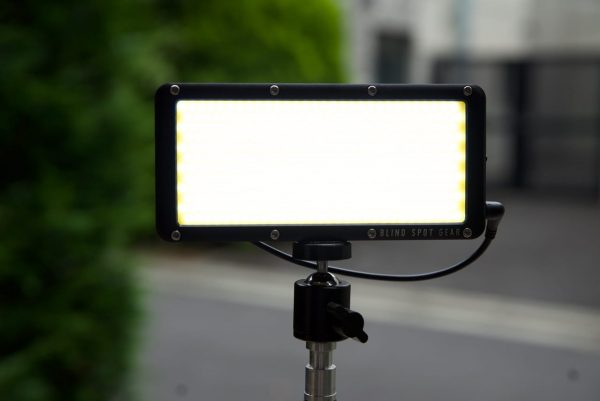
The Tile Light offers fairly good photometric scores and produces a nice quality of light. The wide soft source that comes from a fixture this small is by far the light’s biggest strength. The portability of the light is going to appeal to a lot of shooters, and the $495US price point seems pretty reasonable for what you get.
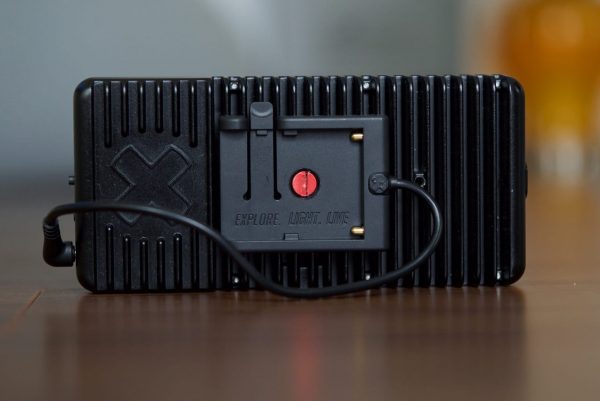
Tile Light Specifications
Optical System- Single Surface Emitter 120 (half Peak angle)
Beam Angle- 120 (half Peak angle)
Lumens- 1700 lm
Max Power- 22w
Max Current Draw- 3.5a (@6.5V)
Colour Temperature (CCT)- 5600k
Control- Built in 5 step dimming (button) or external remote dimmer accessory (included)
Weight- 300g
Lamp Size- 164mm x 78mm x 19mm
Voltage Range- 6.5-24V DC
Power in: 3.5mm DC Barrel Control port: 2.5mm 4 pin jack AC 12v output, 3m cord, international plugs
Battery Adapter- (sony NP-f compatible) run time with supplied battery 45min
What are your impressions of the Tile Light? Would you buy one? If not, what other options do you suggest? Let us know in the comments below.





